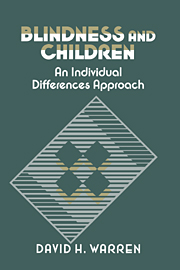Book contents
- Frontmatter
- Contents
- Preface
- Introduction
- Part I Interaction with the physical world
- Part II The acquisition of cognitive skills
- 5 Language, concept formation, and classification
- 6 Executive functions: memory, attention, and cognitive strategies
- 7 Cognitive style, creativity, and intelligence
- Part III Adapting to the social world
- Part IV Summary
- Conclusion
- References
- Author index
- Subject index
5 - Language, concept formation, and classification
from Part II - The acquisition of cognitive skills
Published online by Cambridge University Press: 02 December 2009
- Frontmatter
- Contents
- Preface
- Introduction
- Part I Interaction with the physical world
- Part II The acquisition of cognitive skills
- 5 Language, concept formation, and classification
- 6 Executive functions: memory, attention, and cognitive strategies
- 7 Cognitive style, creativity, and intelligence
- Part III Adapting to the social world
- Part IV Summary
- Conclusion
- References
- Author index
- Subject index
Summary
Language
In the literature on child development, language development is usually treated as a single body of evidence. We will consider language development in two parts. On the one hand, language serves as one of several avenues of communication with other people. We will treat this topic in Chapter 10 on social interaction. Language also develops as a skill that facilitates the child's developing conceptual abilities. This aspect of language is at issue here.
Vocabulary: the first words
As difficult as it is to identify the infant's first words, various reports in the literature purport to fix the earliest use of words. These reports present a mixed picture of the emergence of early words. Some studies show first-word use among blind infants to be like that of the general population, but other studies show evidence of lags.
Evidence of timely word-use onset comes from studies of both groups and individuals. Maxfield and Fjeld (1942), using the Vineland Social Maturity Scale, found that on the item “uses names of familiar objects,” their heterogeneous group of children with visual impairments scored marginally better than sighted norms. More recently, Ferrell et al. (1990) included “first word” as a milestone item in the VIIRC study (see Table 2). The median age for this item was 10 months, with fully half of the children falling into a five-month period encompassing the median. Also in the mainstream, and citing individual cases rather than group data, Andersen, Dunlea, and Kekelis (1984) reported first words appearing at 11 and 15 months, Mills (1983) at 12, 13, and 16 months, and Bigelow (1990) at 14 months.
- Type
- Chapter
- Information
- Blindness and ChildrenAn Individual Differences Approach, pp. 134 - 154Publisher: Cambridge University PressPrint publication year: 1994



